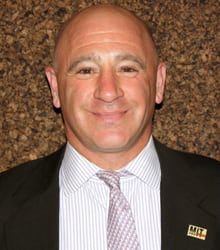
For a few innocent hours, April 15, 2013 was a perfect day to run a little race in Boston. Soaking in the early spring warmth, my younger brother—a marathon competitor—and I were enjoying a post-race party in an office building on Boylston Street. Looking out of open bay windows, we sipped adult beverages and cheered runners as they crossed the finish line. Boston loves a party, and the marathon is one of our biggest.
As always with prominent public events, on the sidewalks below and in our office suite, people were using their smartphones to connect. None of us could have predicted the prominent role social media would play in the aftermath of that terrible day—and the lessons professional communicators can draw from the terrorist attack. You’ll discover some of those lessons below.
Immediately after the first bomb exploded, I knew from my military training that people in the blast zone would need help, so—after making sure my brother and the people at the party were safe and secure—I ran downstairs. I pushed open the door and emerged onto a chaotic tableau of bloodstained glass and panicked people.
I saw a girl lying half inside and half outside the candy store Sugar Heaven; she was bleeding out from her lower left leg. I grabbed a nearby piece of cloth—amazing how much detritus I recall seeing—and applied a tourniquet below her left knee. As I finished, a Boston firefighter came by and scooped her up: The photo of Jimmy Plourde carrying away Victoria McGrath became one of the iconic images of the Boston Marathon bombing. I learned later from Victoria’s doctor that had I not stopped Victoria’s bleeding, she would have died.
For about 15 minutes, I helped EMTs treat victims and move them into ambulances. After a Boston PD Special Operations officer instructed me to leave the secured scene, I returned to the office suite and reunited with my brother. Before we left the office via the rear fire escape, I took—and tweeted—a photo looking down onto the site of the first explosion.
This was the first photo on social media from the Finish Line. While my intent was simply to get information out from the Boston Marathon finish line and make clear that it was, in fact, a bomb (not an accidental explosion), the photo went viral: As of July 29, it’s been retweeted 4,380 times and favorited 361 times. The photo placed me solidly at the epicenter of the ensuing media coverage. Google my name and “Boston Marathon” and you’ll see what I mean by “at the epicenter.”
The exposure my photo received underscores the fact that there are specific communications and social media lessons we can draw from the Boston Marathon bombing. Here are a few I learned from my personal immersion in this crisis, and which I submit respectfully for your consideration:
- In today’s 24-7-365 media cycle, there’s a crisis all the time. You, your brand/product, your client, may not be tagged as the crisis du jour, but you might be “it” tomorrow. Have a crisis plan. Make sure your crisis plan includes how you plan to use social media.
- In a crisis, use social media credibly: Take a measured, less excitable approach than the general public. As a communications professional, you know how to craft concise, compelling content. In a crisis, put those skills to work on behalf of your client, the brand/product you represent, or even your personal brand.
- Know your social media outlets and use them wisely. I Tweeted my photo because I know from hard data and personal experience that the public turns to Twitter in a natural or man-made crisis. Use appropriate social channels that reflect well on your client, the brand/product you represent, or your personal brand.
- If you find yourself at the center of a crisis (as I did) bear in mind that as a “marketer,” you have a professional (and personal) obligation to “use your powers for good.” (Note: Sure, you describe yourself as a “communicator” or “PR pro,” but most people don’t understand the difference, and generally view PR pros as ‘shills’ and marketers as ‘salespeople’.)
- On the flip side, while this may seem obvious, never, ever exploit your personal exposure for self-gain. As quickly as you became a traditional or social media darling, you can turn into a self-serving pariah. My motives at and after the marathon were first, to help victims; second, to show the public exactly what was happening at the chaotic scene.
Bruce Mendelsohn is Director of Communications & Outreach for the Gordon-MIT Engineering Leadership Program. He is also principal of The Hired Pen, a boutique communications/PR consultancy. Twitter: @brm90

Thanks for publishing this piece, PRNews. The last two points are the most important to me, both professionally and personally. The bottom line is, we should be about “doing good.”